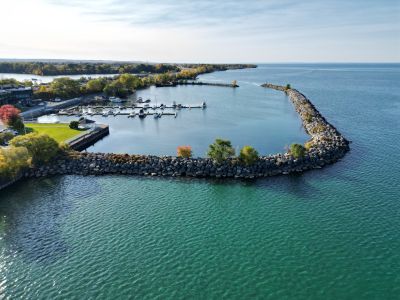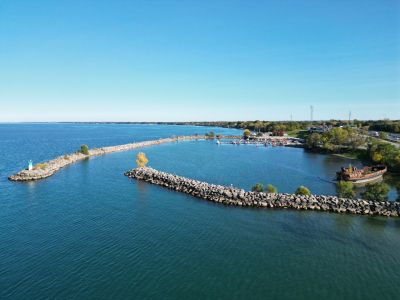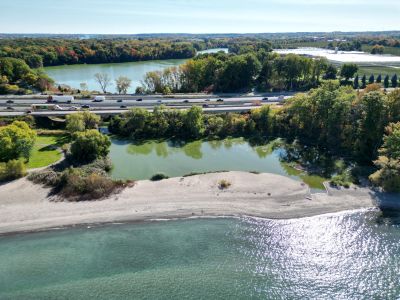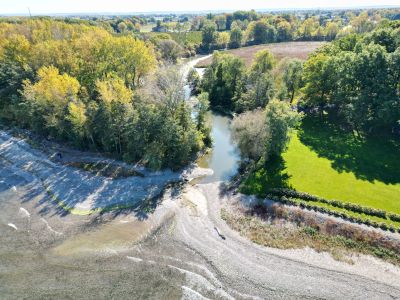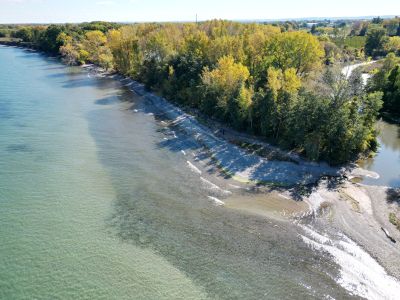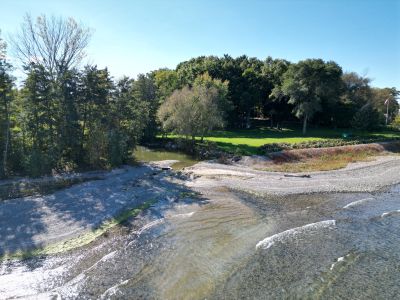Project Overview
From frequent storm surges to extreme weather events, communities along the Great Lakes coast are facing the impacts of coastal flooding and erosion. These hazards can damage residential properties, local businesses, and critical municipal infrastructure like roads, boardwalks, and water treatment facilities.
The Lake Ontario Coastal Resilience Pilot Project is a collaborative, multi-partner, and multi-jurisdictional initiative that will leverage science-based approaches to develop short-term and long-term actions. The goal is to help local communities mitigate or eliminate potential coastal hazards, including flooding, coastal erosion, variable lake levels, extreme events, wave uprush, and the associated risks to life, property, and infrastructure.
This project includes the western Lake Ontario shoreline from the mouth of the Niagara River in Niagara-on-the-Lake to Joshua’s Creek in Oakville/Mississauga, encompassing portions of the Niagara Peninsula Conservation Authority (NPCA), Conservation Halton (CH), and Hamilton Conservation Authority (HCA) watershed jurisdiction shorelines.
The main objectives of the project are:
- Assessing and modeling shoreline conditions to understand risks like erosion, flooding, and climate impacts.
- Mapping shoreline hazards and vulnerable areas under current conditions (only NPCA and CH shorelines) and future climate scenarios (all areas).
- Conducting risk and socio-economic assessments for infrastructure and natural assets.
- Identifying mitigation options, including nature-based solutions, for high-risk areas.
- Developing a Coastal Resilience Plan with policy recommendations and an implementation roadmap.
BACKGROUND INFORMATION
In 2024, the Canadian Federal Government launched the four-year (2024-2027) Natural Resources Canada's Climate-Resilient Coastal Communities (CRCC) program, allocating $4.1 million in funding for pilot projects across the Great Lakes Region.
In January 2025, Conservation Ontario (CO) announced that it was the successful recipient of $3.1 million of funding from the CRCC program toward the development of three Great Lakes pilot projects, including $1.5 million for the Lake Ontario Coastal Resilience Pilot Project led by NPCA, in partnership with CH, HCA, CO, and many other partners.
How to get involved & participate
Community voices will play a vital role in shaping a more resilient Lake Ontario shoreline.
Throughout this four-year journey, local residents, community groups, and shoreline interested groups will be invited to share their insights, experiences, and ideas. From early planning to final recommendations, engagement will be woven into key milestones—ensuring the project reflects local priorities and lived realities.
With several opportunities to participate along the way, communities will help guide solutions that protect what matters most: our homes, natural spaces, infrastructure, and collective future.
Stay tuned for ways to get involved and be part of building a safer shoreline for generations to come.

